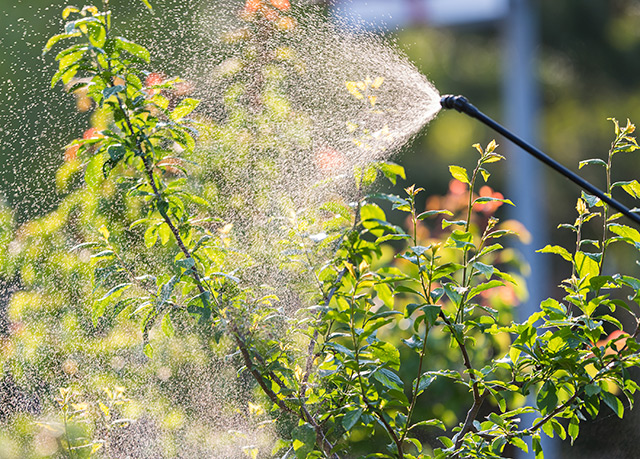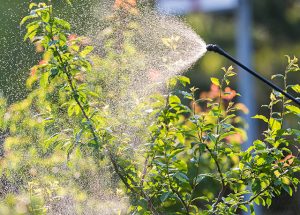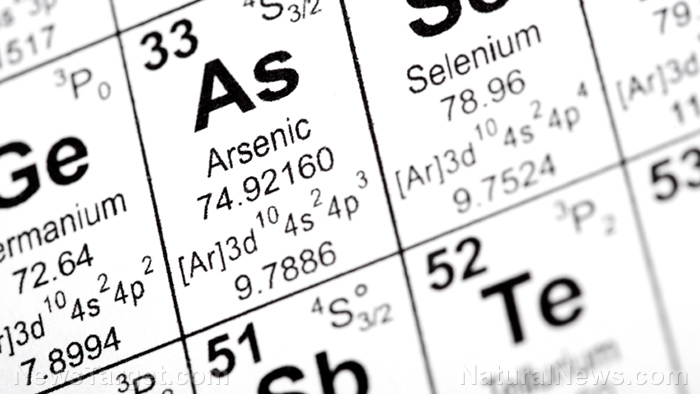Fenpropathrin – toxicity, side effects, diseases and environmental impacts
12/02/2017 / By Janine Acero

Fenpropathrin is an insecticide used to control a range of insect pests, such as mites, whiteflies, leaf miners, armyworms, loopers, aphids, Tortrix moths, cutworms and stem borers. It appears as a yellow to brown liquid or solid substance with a faint characteristic odor. Fenpropathrin is applied to fruit and vegetable crops in the form of emulsifiable concentrate or suspension concentrate.
The molecular formula for fenpropathrin is C22H23NO3.

List of known side effects
Fenpropathrin is an extremely toxic chemical that is harmful in contact with the skin, fatal if inhaled, and toxic if ingested. Some of the adverse side effects of direct contact with or exposure to fenpropathrin include:
- Irritation of skin and eyes
- Irritability to sound or touch
- Abnormal facial sensation
- Sensation of prickling, tingling or creeping on skin
- Numbness
- Headache
- Dizziness
- Nausea
- Vomiting
- Diarrhea
- Excessive salivation
- Fatigue
Fenpropathrin’s production and use as an insecticide may result in its direct release to the environment. It is known to be highly toxic to aquatic organisms.
Body systems affected by fenpropathrin
Results of long-term toxicity studies with animal models concluded that there is no evidence of fenpropathrin-induced carcinogenic potential. Fenpropathrin is classified as “Not likely to be carcinogenic to humans” as per the U.S. Environmental Protection Agency (EPA).
However, fluid in the lungs and muscle twitching may develop in severe cases of fenpropathrin contact or exposure.
Items that can contain fenpropathrin
Residues of fenpropathrin can be found in apples, pears, grapes, peaches, citrus fruits, cotton seed, gherkins, sweet peppers, beans, cabbage, cucumber, aubergines, hops, maize and tomatoes.
Brand names for fenpropathrin include:
- Danitol
- Meothrin
- Fenepropatrina
- Fenpropanate
- Fenpropathrin (ANSI)
- Fenpropathrine
- Fenpropatrin
- Fenpropatrina
- Herald
- Meothrin
- Ortho Danitol
- Rody
Avoid these products that contain fenpropathrin as an active ingredient:
- Danitol
- Fenthrin
- Platino
- Rody
- Meothrin
Manufacturers and suppliers of products containing fenpropathrin include:
- Agro-Care Chemical Industry Group Ltd
- Valent U.S.A. Corp.
- Fortune Ag
- Sumitomo
How to avoid fenpropathrin
Handlers, mixers and applicators of fenpropathrin may be exposed to its fumes in the workplace. The following are some safety and protective measures in case of contact with or exposure to fenpropathrin:
- Inhalation – Check with the workplace regulations on using respirators during handling of chemicals. In case of accidental aspiration, leave the area of contamination and go to an open area with fresh air or proper ventilation. Seek medical attention immediately.
- Skin contact – Wear a protective suit, chemical-resistant gloves and safety footwear or safety gumboots. Remove any contaminated clothing item carefully, avoiding any contact with the skin. Rinse the contaminated part of the skin with soap and water.
- Eyes – Wearing goggles or a face shield is required before handling any chemical. In case of contact, remove contact lenses (if applicable), then rinse with running water for several minutes. Seek medical help at once.
- Ingestion – Do not eat, drink or smoke near this substance. In case of swallowing any amount of fenpropathrin, give plenty of water to drink. Refer for medical attention immediately.
Where to learn more
- Commonly used insecticides impair child brain development even at low exposure levels
- Poison.news
- Chemicals.news
- Pesticides.news
- Toxins.news
Summary
Fenpropathrin is an insecticide used to control a range of insect pests. It appears as a yellow to brown liquid or solid substance with a faint characteristic odor.
Fenpropathrin is a highly toxic chemical that is harmful in contact with the skin, fatal if inhaled, and toxic if ingested.
Sources included:
Tagged Under: Fenpropathrin



















